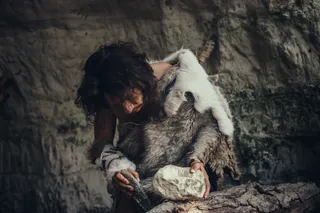Vestigial structures are body parts that we've evolved to no longer need. The natural selection process dictates that we keep the traits that continue to serve a purpose while the others become functionless or degenerate. Here are five vestigial body parts.
In humans, this organ dates back almost 80 million years and helped our ancestors to digest tough plants and vegetables. Located in the lower right part of the intestine, the appendix is approximately 3.5 inches long and less than .5 inches wide — with its shape reflected in its Latin name, "vermiform," which means "worm-shaped."
Although the appendix is considered vestigial in terms of its original usefulness, modern researchers believe it has evolved to play a role in supporting the immune system, thanks to its abundance of lymphoid cells. Other scientists think we will evolve to the point that the appendix will no longer be a part of the ...















